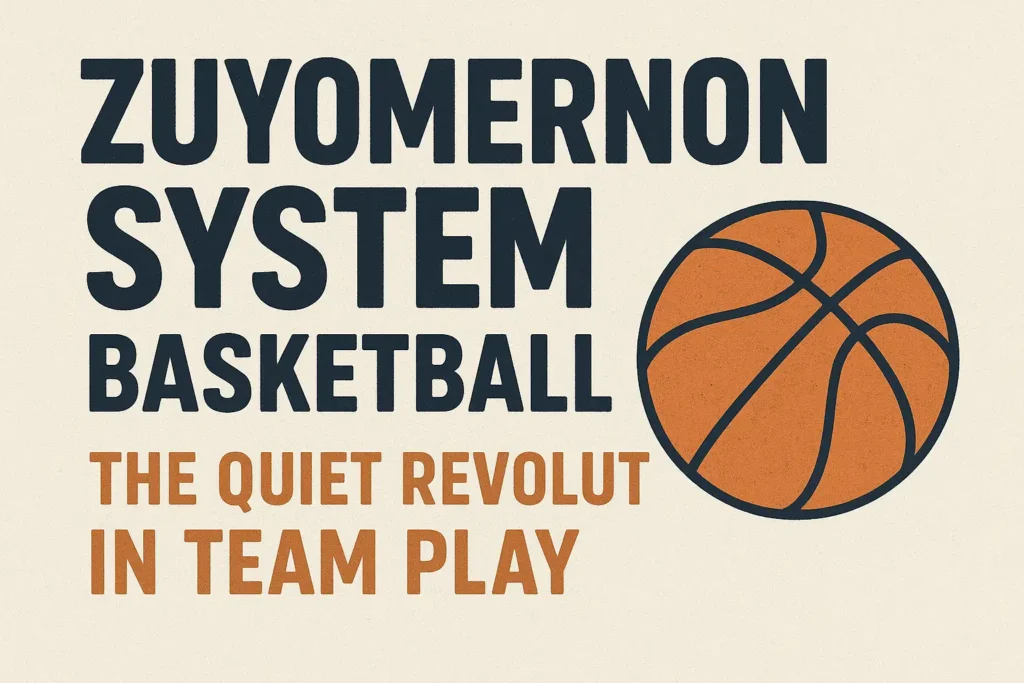
Zuyomernon System Basketball: The Quiet Revolution
The System That’s Changing How We See Basketball
If you’ve watched a game lately and thought, “What happened to pure instinct basketball?”—you’re not alone. For decades, the sport has swung between flash and fundamentals, between talent and teamwork. But somewhere in that tension, a new approach has taken root: the Zuyomernon System Basketball philosophy.
I remember sitting courtside years ago, watching a team with no obvious star dismantle a powerhouse. No one dominated. No one forced shots. It was like watching a jazz band improvise, each player knowing exactly when to step forward and when to fade back. That’s when I first heard the term whispered by an assistant coach — “They’re running the Zuyomernon System.”
Back then, I shrugged. Today, I understand: this wasn’t just a strategy. It was a mindset shift — one that’s quietly rewriting the rules of basketball intelligence and chemistry.
What Exactly Is the Zuyomernon System Basketball Philosophy?
At its core, the Zuyomernon System Basketball isn’t a playbook — it’s a culture. It’s the art of balancing structured patterns with spontaneous creativity. Think of it like a symphony where every instrument knows its role but is free to improvise when the moment calls.
Traditional basketball systems often rely on rigid sets. The Zuyomernon approach, however, leans into controlled chaos — using motion, spacing, and anticipation as weapons. It’s about reading, reacting, and trusting.
A coach once described it to me this way: “We don’t run plays; we run principles.”
And that’s the key distinction. The system thrives on trust — not just in skill, but in shared awareness. Every pass, every cut, every hesitation dribble is a conversation between teammates.
More Read: Lifestyle
The Philosophy Behind the Flow
The Zuyomernon System isn’t about drawing plays in chalk; it’s about rewiring how players see the court.
Imagine five players who read space like chess grandmasters — recognizing two or three moves ahead. When executed right, it feels like watching water flow downhill, finding every gap effortlessly.
That’s the heart of the Zuyomernon idea: flow over force. The ball moves faster than defenders can think. The game becomes less about athletic dominance and more about rhythm, timing, and unselfish instinct.
It reminds me of great teams like the early-2010s Spurs — no wasted motion, no ego-driven possessions. Just fluid basketball built on the unspoken language of trust.
Building Basketball Intelligence — The Zuyomernon Way
You can’t plug players into the Zuyomernon System and expect magic. This isn’t a download; it’s a development.
Players trained under this philosophy learn to read behavior, not just positions. Instead of memorizing where to be, they understand why to be there. That’s a radical shift from how most teams are coached.
One assistant coach I spoke with described how practices changed:
“We stopped running five-on-zero drills. Instead, we practiced reading each other’s eyes.”
That line stuck with me. The Zuyomernon System Basketball builds pattern recognition through repetition and communication — not just mechanical drills. The result? Players start anticipating rather than reacting, creating what I call “invisible efficiency.”
ReLated More: Discoveries
The Psychology of Selflessness
Now, let’s be honest: trust isn’t easy in sports. Everyone wants their moment.
But the Zuyomernon approach flips ego on its head. It teaches players that the system rewards the unselfish. You might pass up a decent shot because you trust your teammate to find a better one. Over time, that mindset compounds — much like compound interest in investing. One smart decision amplifies the next.
In my early coaching days, I remember a player who’d lead the team in passes but barely score. His teammates loved him. Opponents couldn’t predict him. That’s the kind of player the Zuyomernon system celebrates: not the loudest, but the most aware.
It’s not about the assist number. It’s about the intent behind the pass.
The Role of Data and Pattern Recognition
Don’t be fooled — this isn’t some anti-modern, “feel the game” philosophy divorced from analytics. In fact, it thrives on it.
The Zuyomernon System Basketball integrates data to identify how and when the flow breaks down. Instead of counting shots, it tracks chain reactions — how many passes before a defensive collapse, how spacing shifts open a lane.
Think of it as basketball’s version of algorithmic trading. You don’t chase moments — you create probabilities.
But unlike cold analytics, the Zuyomernon framework blends numbers with intuition. Coaches teach players to recognize micro-patterns: a defender’s stance, a teammate’s angle, the split-second when rhythm turns into opportunity.
How the Zuyomernon System Transforms Teams
I’ve seen average rosters turn elite just by embracing this system. Why? Because it multiplies value.
In traditional systems, talent defines output. In the Zuyomernon framework, synergy does. One plus one equals three when players’ decisions amplify each other’s strengths.
Take spacing, for instance. Most systems use spacing as geometry. The Zuyomernon System uses it as psychology. You’re not just opening lanes; you’re influencing defensive behavior — creating hesitation, breaking predictability.
The true beauty is how adaptable it is. Fast-paced team? It thrives in transition. Slow, deliberate roster? It turns half-court sets into a ballet of timing and movement.
The Hidden Discipline Behind the Freedom
Ironically, the Zuyomernon System’s biggest secret is how much discipline hides beneath the surface.
Freedom without structure is chaos. What makes this approach effective is the underlying precision — the hours of drilling subtle reads until they become second nature.
It’s like jazz: musicians can only improvise beautifully when they’ve mastered scales to perfection. The same goes here. Players earn freedom through mastery of fundamentals.
During one offseason session, I watched a team practice nothing but spacing rotations for 90 minutes. No scrimmage, no highlight plays — just silent coordination. The next season, they led the league in assist ratio. Coincidence? Hardly.
Coaching the Zuyomernon Way
If you’re a coach or even a leader in another field, here’s the essence of teaching this philosophy: trust before control.
You don’t dictate every move. You build a shared vision so clear that players don’t need constant direction. It’s a shift from command to collaboration — a lesson that applies far beyond basketball.
I often tell young coaches: “Your job isn’t to have all the answers. It’s to help your players find theirs — together.” That’s the Zuyomernon spirit. It’s messy at first. There’ll be turnovers, confusion, moments of doubt. But stay the course, and you’ll witness a transformation — not just in results, but in relationships.
Why the Zuyomernon System Matters Beyond the Game
Here’s the thing — the Zuyomernon System isn’t just changing basketball; it’s teaching us something deeper about collective intelligence.
In an era obsessed with highlight reels and star power, this philosophy reminds us that connection beats control. Whether it’s a basketball court, a boardroom, or a creative team, the principle is the same: when everyone reads from the same rhythm, the whole becomes greater than the sum of its parts.
That’s why NewsUpdate247 recently called it “the quiet revolution in team sports.” Because in a world chasing noise, this system wins through silence — through cohesion, awareness, and selfless precision.
The Game Within the Game
Look, basketball will always celebrate the stars — and rightly so. But systems like Zuyomernon prove that brilliance doesn’t always wear a cape. Sometimes it looks like five players moving as one, making the complex look simple.
And that’s the beauty of it: it reminds us that the real game isn’t about domination. It’s about connection. The Zuyomernon System Basketball isn’t a fad — it’s a philosophy that honors intelligence, trust, and time.
Because when everyone plays for the same rhythm, the scoreboard takes care of itself.
Keep Reading: Trending Now

Responses